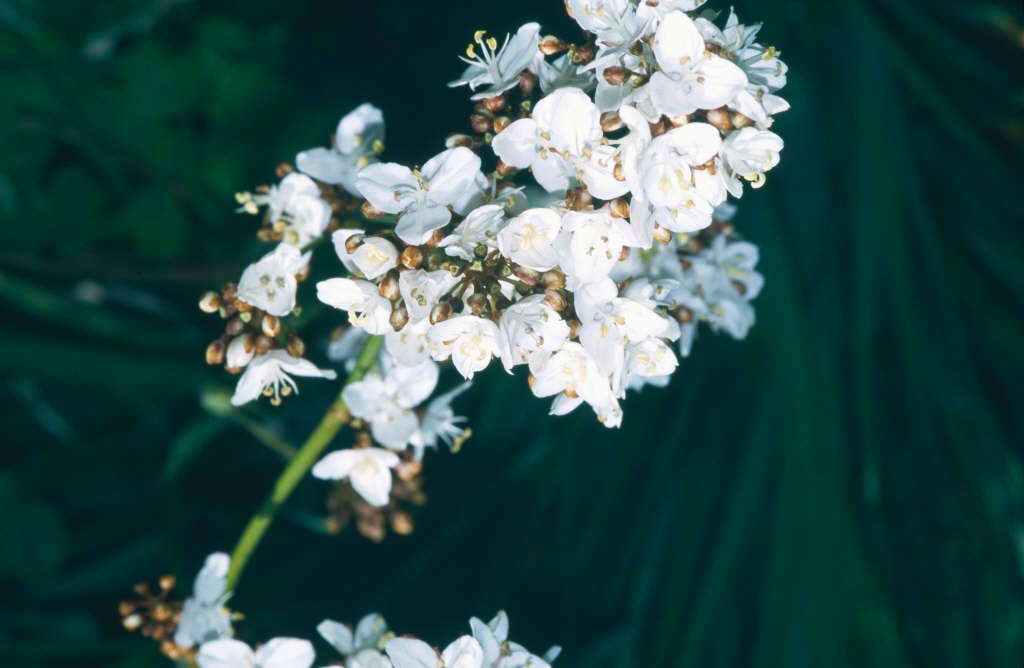Libertia chilensis
New Zealand satin flower
An evergreen perennial forming a large clump of erect, linear leaves, with clusters of white flowers borne on stiff stems in late spring and early summer, followed by conspicuous seed capsules
Size
Ultimate height
0.5–1 metresTime to ultimate height
2–5 yearsUltimate spread
0.5–1 metresGrowing conditions
Moisture
Moist but well–drainedpH
Acid, Alkaline, NeutralColour & scent
| Stem | Flower | Foliage | Fruit | |
| Spring | White | Green | ||
|---|---|---|---|---|
| Summer | White | Green | ||
| Autumn | Green | Orange | ||
| Winter | Green |
Position
- Full sun
Aspect
South–facing
Exposure
Sheltered Hardiness
H3Botanical details
- Family
- Iridaceae
- Native to GB / Ireland
- No
- Foliage
- Evergreen
- Habit
- Tufted
- Genus
Libertia are clump-forming perennials with grass-like, evergreen leaves and panicles of saucer-shaped white or blue flowers, followed by orange seed capsules
- Name status
Correct
- Plant range
- Argentina Chile
How to grow
Cultivation
Grow in moderately fertile, humus-rich soil that is moist but well-drained. Needs a warm sunny position and a dry mulch for protection in winter
Propagation
Propagate by seed in pots outdoors as soon as ripe or propagate by division in spring
Suggested planting locations and garden types
- Prairie planting
- Gravel garden
- Flower borders and beds
- Cut flowers
Pruning
Remove flower stalks after flowering, tidy up in late winter
Pests
Generally pest-free
Diseases
Generally disease-free
Get involved
The Royal Horticultural Society is the UK’s leading gardening charity. We aim to enrich everyone’s life through plants, and make the UK a greener and more beautiful place.
